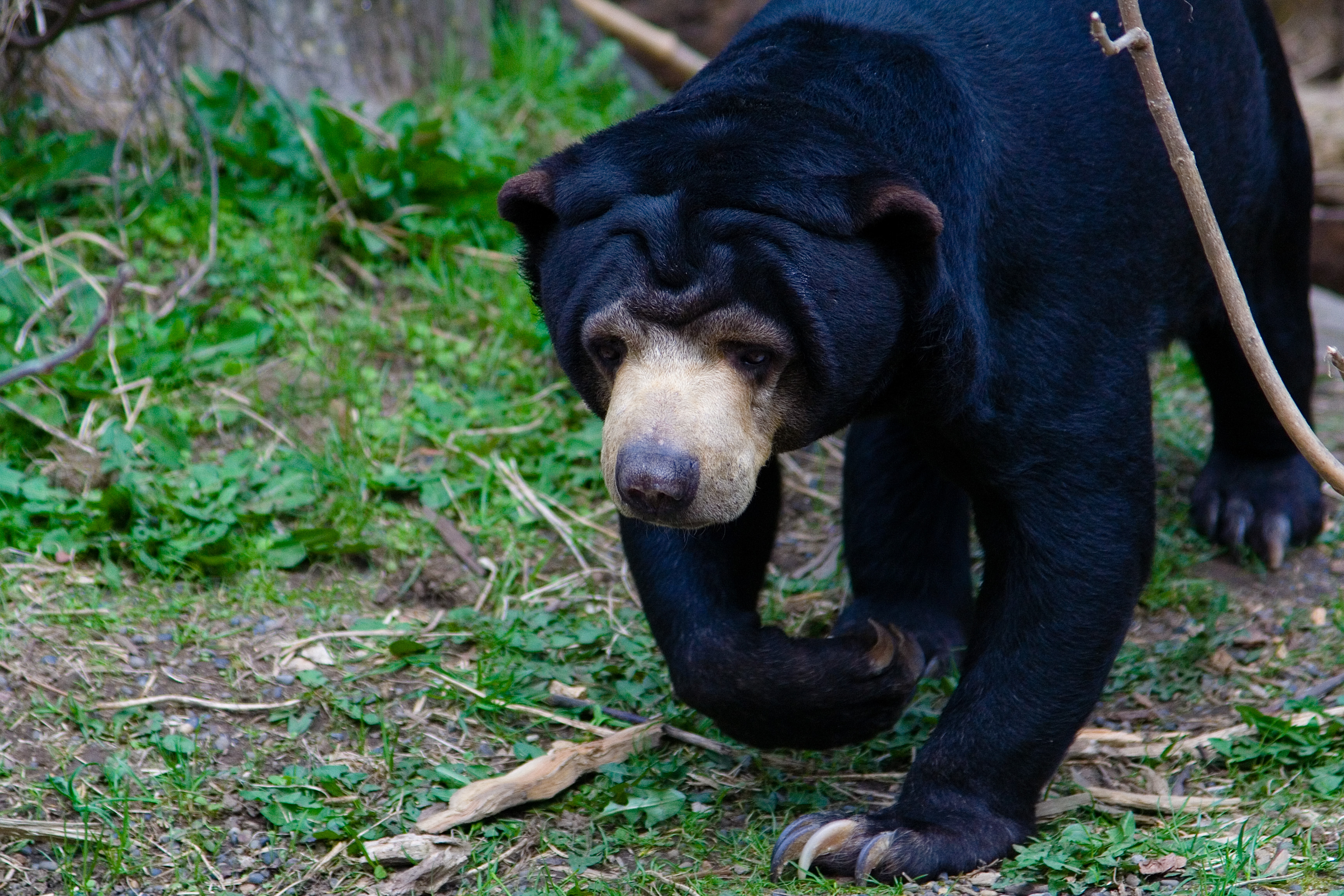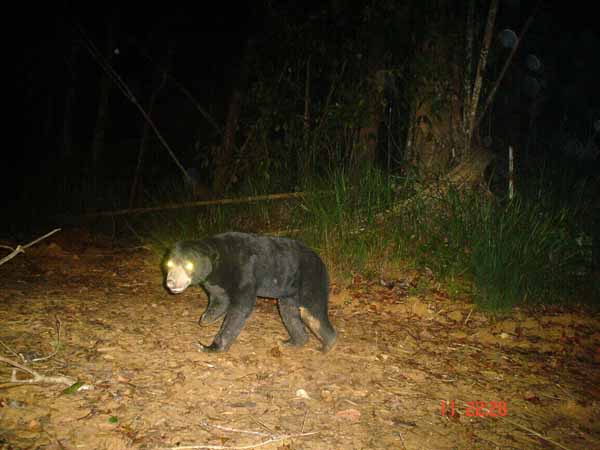Sun Bear (Helarctos malayanus)
Nutrition
 The Malayan Sun Bear
is an omnivore and obtains its food in many ways. The sun bear
has long claws used to dig up roots and to find insects such as
termites. They also scavenge for berries that are in season
using a highly effective sense of smell. Sun bears also eat
fruit by climbing trees when the fruit is in season. Honey is
also commonly eaten by sun bears by using long tongues and
protruding lips to extract the honey from bee's nests. Using
strong, sharp canines, sun bears can hunt and kill small animals
such as birds and rodents (natgeo).
The Malayan Sun Bear
is an omnivore and obtains its food in many ways. The sun bear
has long claws used to dig up roots and to find insects such as
termites. They also scavenge for berries that are in season
using a highly effective sense of smell. Sun bears also eat
fruit by climbing trees when the fruit is in season. Honey is
also commonly eaten by sun bears by using long tongues and
protruding lips to extract the honey from bee's nests. Using
strong, sharp canines, sun bears can hunt and kill small animals
such as birds and rodents (natgeo).
To see a Sun Bear using their long claws to eat termites, click here
Sun bears are very nocturnal creatures even though most
pictures of them are in the daylight. This because most of the
pictures of the sun bear are from zoos and not from natural sun
bears. Sun Bears rarely go outside during the day to avoid
extreme heats. They collect fruit, berries, and roots during the
night as well as hunt small animals (natgeo)
Unlike most bears, the sun bears diet does
not change from season to season. This is probably because most
other bears live in climates where the resources change from
summer to winter due to unproductive conditions. The sun bear
lives in a climate where the same fruit and berries are in
highly productive conditions year round. This means that unlike
other bears, the sun bear has a consistent diet and does not
change much throughout the year (Wong et al.).
All the food
Helarctos malayanus
eats gives it energy throughout the day. To distribute this
energy efficiently, the sun bear utilizes a closed circulatory
system like most mammals. The heart for the sun bear is 4
chambered and receives oxygenated blood from the lungs. The
heart then sends the oxygenated blood to every part of the body.
After the body uses the oxygen, the deoxygenated blood is sent
back through the heart and to the lungs where it can then get
more oxygen (zooplanets). Most mammals use closed circulatory
systems because they are more efficient for the size of the
mammals.
